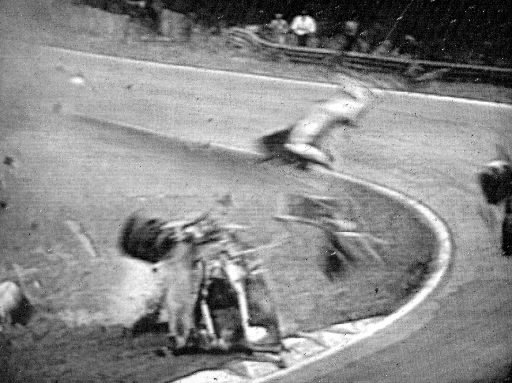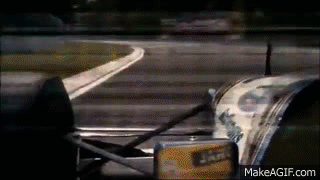Formula One and the racing world
You may think there is just one type of Formula racing, but actually, there are more – and they’re all different, and each specific to meet the racing world’s needs, as well as the fans’.
Formula 4, also known as F4, is a type of open-wheel racing (the car’s cockpit is exposed and so are the wheels from the body). The FIA (Fédération International de l’Automobile) made it specifically for junior drivers. It was created just about a year ago in March 2013, by the FIA, for racers graduating from karts and moving into formula racing. It is a far less expensive version of Formula 3. Since there are no global championships, individual nations are allowed to form their own races, with their own sets of specifications and regulations.
Formula 3, abbreviated as F3, is a type of open-wheel racing. There are multiple championships held in Australia, Asia, Europe, and South America, but not in the United States. Formula 3 is normally a driver’s first step for those who are looking into professional careers in racing. Formula 3 was created in 1950 by the FIA. F3 was inspired by, or evolved from post-war auto racing. All F3 car originally had a lightweight tube-frame chassis, and 500cc motorcycle engines were used. Today most F3 cars are made out of carbon fiber, a lightweight, strong metal. However F3 does not come at a low price: a good, competitive seat in British F3 cost about 400,000 pounds! But for most drivers, the price is tolerated and this is important to a young driver’s future career.
Formula 2, originally known as Formula B was founded in 1948, was known as a smaller and less expensive version of the Grand Prix cars of the time. One of the races held in its first year was the 1948 Stockhold Grand Prix race. Announced by the FIA, Formula 2 was only a smaller and less expensive version of the Grand Prix. Formula 2 (F2) was a kind of open wheel racing, but it was bumped out in 1985 and replaced by Formula 3000. However, The FIA put Formula 2 back in and ran the FIA Formula Two Championship in 2009. The FIA’s objective was to form cheap-costing series that would allow young drivers a shot at racing in the highest levels of motorsport.
And finally, the fastest of all, Formula 1 racing. Every Formula 1 car now is powered by a 2.4 litre 8 cylinder- engine, they can produce almost 900 horse power, and its engine needs to be rebuilt after only 500 miles, due to very high revolution rates. F1 cars produce nearly nineteen thousand revs per minute, and get about 4 miles per gallon of gas.
Formula 1 began in 1947 in Europe. The idea was agreed upon after World War II in 1946. It was probably most popular in 1970, when it went onto national television. The two most famous racers living today are Michael Shumacher and Sebastian Vettel. Michael is currently in an induced coma because he had an accident during a ski trip with his son. He is a seven-time winner of the F1 world championship provided by the FIA: Federation de l’ Automobile
. Sebastian Vettel is a 4-time F1 world champion winning this event for 4 consecutive years from 2010 to 2013. Now, F1 is probably the most popular type of track racing; but of course street racing and drag racing, which I may talk about in a later essay, could be more exciting. Formula 1 is also the fastest, besides Indy car racing, which makes it that much more exhilarating.
Formula 1 cars can easily surpass the 200 mph mark, but drivers know better than to take that risk on a track. Most Formula 1 tracks are oval: you need to come around the outside on straights and cut on the inside on turns. But some Formula 1 tracks are not oval, for example, the Grand Prix track. When you are driving slowly, you may be able to drive on the inside the entire time, but when you are driving at speeds 160 mph and higher, it gets a lot harder. In racing, the positioning at the beginning of the race is based off the best time the racers made in an earlier race at the track. Best goes in front, slower goes in the back. The objective to racing on the track is to maintain enough speed, to not fall behind in the race and come in last, and not to go too fast to the point where your car spins out and makes a giant chain reaction of crashes on the track. After all, Formula 1 racing can be a deadly sport, as we will find out.
.
Ahhh, the danger of Motorsport racing: some people despise it for its toll; other seem to thrive off of the danger. These are some deaths and crashes made during Formula 1 races:
Wolfgang Von Trips, 1961 R.I.P
Wolfgang Von Trips was a 2-time champion of the Formula 1 world championship, but that all changed in 1961. He was racing in Monza, Italy when the back of his car hit the front of another one; he drifted out of bounds and slammed his car into the catch fence, killing 15 spectators. He then did an airborne 360 with his car, taking one with him. Though it didn’t seem like a very injurious crash, he died.
 Nikki Lauda, 1976 very close call
Nikki Lauda, 1976 very close call
Nikki Lauda was a Formula 1 driver who is retired now, and at the age of 65. He won three Formula 1 world championships, 1975, 1977, and 1984. His crash was at the German Grand Prix in Nürburgring. He was coming around a turn when the back of his car kicked out, the tire slipped, and he tried to correct it but he overdid it. The next thing he knew, his car burst into flames after pelting into a wall. His Ferrari lay smoking, just like one hundred men with cigars, all puffing away. He suffered massive scars from burning on his head, and he lost most of his right ear, and fell into a coma after the crash. Many people thought he was going to die, but he survived and the next year, in 1977, he gets back in his car and starts racing again.
Gilles Villeneuve 1982 R.I.P
Gilles Villeneuve was a 6-time world champion in Formula 1 racing, but had a fatal crash in 1982 while qualifying for the 1982 Belgian Grand Prix. It started at contact with Jochen Mass’s car, but then his car tumbled across the infield until it came to rest on all fours on the track. Except Gilles Villeneuve wasn’t in the car: he lay across the track against the crash fence. He had flown out of his car and landed on the crash fence head– first. He died on May 8th due to severe neck and head injuries.

Aryton Senna 1994 R.I.P
Aryton Senna was a 3-time world champion in Formula 1. In 1994, at the Formula 1 San Marino Grand Prix, Ayrton Senna died while leading the race. It was on lap six of the exciting race, and he was doing so well in the race, all the way up until that fated 6th lap on the straightaway. There was a sharp turn up ahead and he lost control of his car at the worst time; he drove straight into the barrier, probably dying almost instantly. The medical people could tell by his bloodshot eyes that he had suffered massive brain damage.

